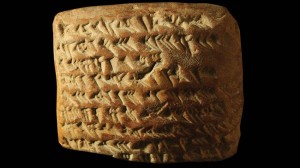Extended Artificial Memory: Toward an Integral Cognitive Theory of Memory and Technology by Lars Ludwig. (PDF) (Or you can contribute to the cause by purchasing a printed or Kindle copy of: Information Technology Rethought as Memory Extension: Toward an integral cognitive theory of memory and technology.)
Convention book selling wisdom is that a title should provoke people to pick up the book. First step towards a sale. Must be the thinking behind this title. Just screams “Read ME!”
😉
Seriously, I have read some of the PDF version and this is going on the my holiday wish list as a hard copy request.
Abstract:
This thesis introduces extended artificial memory, an integral cognitive theory of memory and technology. It combines cross-scientific analysis and synthesis for the design of a general system of essential knowledge-technological processes on a sound theoretical basis. The elaboration of this theory was accompanied by a long-term experiment for understanding [Erkenntnisexperiment]. This experiment included the agile development of a software prototype (Artificial Memory) for personal knowledge management.
In the introductory chapter 1.1 (Scientific Challenges of Memory Research), the negative effects of terminological ambiguity and isolated theorizing to memory research are discussed.
Chapter 2 focuses on technology. The traditional idea of technology is questioned. Technology is reinterpreted as a cognitive actuation process structured in correspondence with a substitution process. The origin of technological capacities is found in the evolution of eusociality. In chapter 2.2, a cognitive-technological model is sketched. In this thesis, the focus is on content technology rather than functional technology. Chapter 2.3 deals with different types of media. Chapter 2.4 introduces the technological role of language-artifacts from different perspectives, combining numerous philosophical and historical considerations. The ideas of chapter 2.5 go beyond traditional linguistics and knowledge management, stressing individual constraints of language and limits of artificial intelligence. Chapter 2.6 develops an improved semantic network model, considering closely associated theories.
Chapter 3 gives a detailed description of the universal memory process enabling all cognitive technological processes. The memory theory of Richard Semon is revitalized, elaborated and revised, taking into account important newer results of memory research.
Chapter 4 combines the insights on the technology process and the memory process into a coherent theoretical framework. Chapter 4.3.5 describes four fundamental computer-assisted memory technologies for personally and socially extended artificial memory. They all tackle basic problems of the memory-process (4.3.3). In chapter 4.3.7, the findings are summarized and, in chapter 4.4, extended into a philosophical consideration of knowledge.
Chapter 5 provides insight into the relevant system landscape (5.1) and the software prototype (5.2). After an introduction into basic system functionality, three exemplary, closely interrelated technological innovations are introduced: virtual synsets, semantic tagging, and Linear Unit tagging.
The common memory capture (of two or more speakers) imagery is quite powerful. It highlights a critical aspect of topic maps.
Be forewarned this is European style scholarship, where the reader is assumed to be comfortable with philosophy, linguistics, etc., in addition to the more narrow aspects of computer science.
To see these ideas in practice: http://www.artificialmemory.net/.
Slides on What is Artificial Memory.
I first saw this in a note from Jack Park, the source of many interesting and useful links, papers and projects.
